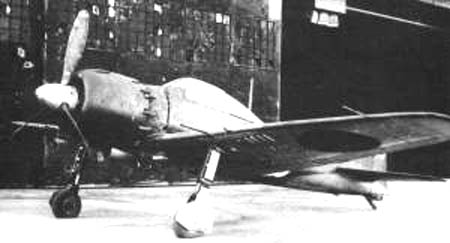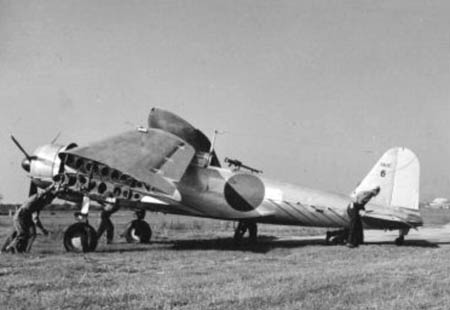01
Mitsubishi A6M Zero-Sen
From: Axis Aircraft of World War II, David Mondey, Chancellor Press, 1996, pp 194-197




(CONTINUED BELOW)

01
Mitsubishi A6M Zero-Sen
From: Axis Aircraft of World War II, David Mondey, Chancellor Press, 1996, pp 194-197




(CONTINUED BELOW)
(CONTINUED FROM ABOVE)
02
Mitsubishi A6M Zero-Sen
From: Fire in the Sky: The Air War in the South Pacific, Eric M. Bergerud, Westview Press, 2000, pp
199-212, 242-243




(CONTINUED BELOW)
(CONTINUED FROM ABOVE)
03
Mitsubishi A6M Zero-Sen
From: Fire in the Sky: The Air War in the South Pacific, Eric M. Bergerud, Westview Press, 2000, pp
199-212, 242-243




(CONTINUED BELOW)
(CONTINUED FROM ABOVE)
04
Mitsubishi A6M Zero-Sen
From: Fire in the Sky: The Air War in the South Pacific, Eric M. Bergerud, Westview Press, 2000, pp
199-212, 242-243




(CONTINUED BELOW)
(CONTINUED FROM ABOVE)
05
Mitsubishi A6M Zero-Sen
From: Fire in the Sky: The Air War in the South Pacific, Eric M. Bergerud, Westview Press, 2000, pp
199-212, 242-243




Good topic George, here is Hiroyoshi Nishizawa the best Navy ace.
http://www.acesofww2.com/japan/Aces/Hiroyoshi_Nishizawa.htm

Great read! I read through all of that, it was well written.
Thanks, and thanks for the link Panzerknacker.
During this attack he “saw” his own death and upon returning to base requested a Kamikaze mission.
He was flatly refused. Men of his calibre were not expendable.
The next day, October 26th, Nishizawa boarded a transport plane to pick up some replacement Zeros.
The transport was attacked by two F6F’s and was shot down. At 25 years of age, the Devil of Rabaul was dead.Posthumously promoted to Lieutenant Junior Grade.
During the war, both sides regarded Nishizawa as Japan’s best fighter pilot.
Very ironic isn’t it.
Thanks ww2admin. I would recommend Eric Bergerud’s book to anyone interested in the air war in the Pacific. It is very well written as you said, and he gives in depth coverage on the many facets of the air war as well as the technological capabilities and development of the Japanese and American aircraft industries prior to and during WWII. It is a very interesting read.
Hi.
Some pics of various A6M-versions:
A6M2-K Trainer:

A6M2-N fighter floatplane (reworked by Nakajima):

A6M5c:

A6M7:

Yours
tom!
Thanks for the pics Tom. That A6M2-N fighter floatplane (reworked by Nakajima) is interesting.
Interesting too, that Nakajima produced more A6M’s than Mitsubishi (the company that designed the Zero).
6,570 produced by Nakajima compared to 3,879 produced by Mitsubishi.
Axis Aircraft of World War II, David Mondey, Chancellor Press, 1996, p 196 (posted at top).
Nice pictures there ¡
Quite a very unfair death , Nishizawa had no chance as passive passenger. Well, nobody s death is fair I guess.
A6M5.




Love those beautiful 3-D CAD renderings Panzerknacker.
THE IMPERIAL JAPANESE NAVY AIR FORCE IN THE PACIFIC WAR
©1996 by Steve Lange
http://www.combinedfleet.com/ijnaf.htm
Nakajima B5N Torpedo Bomber (Kate)
http://en.wikipedia.org/wiki/Nakajima_B5N
http://www.answers.com/topic/nakajima-b5n




Nakajima B5N KATE
http://avia.russian.ee/air/japan/nakajima_b5n.html
Nakajima B5N1 carrier based Torpedo Bomber (Kate)
http://www.vf31.com/aircraft/kate.html
Nakajima B5N “Kate” and Nakajima B6N Tenzan “Jill” Torpedo Bombers
http://www.ussessexcv9.org/Bravepages/kate.html
Japanese Torpedoes
http://www.combinedfleet.com/torps.htm
At the outbreak of the war, the Japanese Navy possessed some of the world’s finest torpedoes, including the fabled Long Lance. The quality of these weapons was no accident, but rather the result of Japan’s intensive efforts during the 1920’s and 30’s to make good the shortcomings of her battle fleet. Laboring as she did under the unfavorable 5:5:3 ratio of capital ships imposed by the Washington Naval Treaty, Japan would most likely be at a disadvantage in any Pacific conflict with the United States. She also knew well enough that the U.S. modeled its fighting doctrine on the famous ‘Plan Orange’, which called for an advance of the American battle fleet across the Pacific to relieve the Phillipines. It was anticipated that at some location in the Western Pacific a decisive battle would be fought. In Japan’s view, some means must be found to offset its disadvantage in capital ships before this battle occurred, or its inferior batle line would be destroyed by the American force. Torpedo tactics and night combat were seized upon as one way to whittle down the American battle line as it made its way across the Pacific. Accordingly, Japan worked diligently to develop the tactics needed to implement this new doctrine, and also to create the weapons with which to carry it out. The result was that Japanese torpedoes showed a steady progression of improvements throughout the 1930’s, culminating in the devlopment of the famous ‘Long Lance’ in 1935.
Designing and perfecting the Long Lance required solving some extremely difficult technical problems, most of which centered around the usage of pure oxygen as a fuel (rather than compressed air). Compressed air is nearly 77% nitrogen, which is useless for combustion, and also contributes to the visibility of the torpedo by leaving a bubble track on the surface. The usage of pure oxygen promised far greater power and propulsive efficiency, but it came with certain costs. The most glaring of these was how to use pure oxygen safely aboard a ship or submarine, given its inherently inflammable nature. Premature detonation of the torpedo upon firing was also a problem. However, the Japanese overcame these hurdles. Further, through meticulous live-testing of their weapons against ship targets, they perfected a warhead detonator that was rugged and reliable (The U.S. Navy’s BuOrd could certainly have taken a lesson or two here). The resulting weapon, the Type 93 torpedo, was fantastically advanced in comparison with its Western counterparts, possessing an unequaled combination of speed, range, and hitting power. This weapon, coupled with the flexible battle tactics practiced by Japan’s cruisers and destroyers, led to victory after victory in the early stages of the war. Only as American radar and gunfire control became increasingly sophisticated would the Japanese advantage in night battles begin to disappear, and even then a Long Lance-armed Japanese destroyer was still a thing to be feared.
Are those B5Ns real ?
It seems a very stretched At-6 Texan.


Extracted from Encyclopedia of weapons of WW2- barnes Noble.
No, they are mock-ups. See below.
Altogether, around 1,150 were built, of which not a single complete example exists today. A large portion of a B5N2 was recovered from the Kuril Islands by a British private collector in 2003.
http://en.wikipedia.org/wiki/Nakajima_B5N
The front end of a North American SNJ-5 Texan and the back end of a Vought BT-13 were used to construct replica Nakajima B3N “Kate” torpedo bomber, N3725G for Tora, Tora, Tora
Tora, Tora, Tora “Kate”, N2047 was constructed from a Harvard Mk. IV and a BT-13.
http://www.air-and-space.com/20051022%20Edwards%20page%202.htm
http://futurshox.net/aerothumbviewer.php?itype=kate
The front of a North American SNJ-5 Texan and the back end of a Vought BT-13
were used to construct replica Nakajima B3N “Kate” torpedo bomber, N3725G
http://fotodj.com/pages/edwards2005/DK22_840.htm

A replica B5N “Kate” torpedo bomber. The torpedo is fitted
with breakaway wooden fins like the real Pearl
Harbor attackers used.
Nakajima B5N Kate

From: Axis Aircraft of World War II, David Mondey, Chancellor Press, 1996, pp 215 - 217

From: Axis Aircraft of World War II, David Mondey, Chancellor Press, 1996, pp 215 - 217

From Illustrated World War II Encyclopedia, Lt. Col. Eddy Bauer and Brigadier Peter Young, DSO, MC, MA, H.S. Stuttman Inc. Publishers, 1978, Volume 5, p 564

From: Fire in the Sky: The Air War in the South Pacific, Eric M. Bergerud, Westview Press, 2000, pp 218 - 219
Nice info about the B5N.
The front end of a North American SNJ-5 Texan and the back end of a Vought BT-13 were used to construct replica Nakajima B3N “Kate” torpedo bomber, N3725G for Tora, Tora, Tora
He,he, my trained eye did not trick me I saw some americanism in those. 
Hi.
Some B5N-pics:



Yours
tom! 
Thanks. You’ve got an eye for detail for sure Panzerknacker 
Thanks for the pics Tom 
Hi.
Aichi D1A dive bomber:

Aichi Tokei Denki Kabushiki Kaisha, which was to become a significant aircraft design and construction company during World War II, had been established in Japan during 1899 as a manufacturer of electrical equipment and watches.
Like most Japanese companies that sought to expand their capabilities by turning initially to aircraft construction as a stepping stone to experience, that would lead eventually to the creation of indigenous designs, Aichi established a working relationship with Ernst Heinkel Flugzeugwerke in Germany. Wishing to contend in early 1931 for an Imperial Japanese navy requirement for a two-seat carrier-based dive-bomber, Aichi requested Heinkel to design and build an aircraft to meet the navy’s specification. Required for operation with float or wheel landing gear, the resulting Heinkel He 50 prototype flew in the summer of 1931 with twin floats. A second version, with wheel landing gear, was duly supplied to Aichi under the export designation He 66.
Basically, the He 66 was a two-bay biplane of metal construction with metal and fabric covering. The braced tail unit was conventional, and landing gear of fixed tailskid type. As supplied it was powered by a 365kW Siemens SAM-22B (Jupiter VI) radial engine. Modifications carried out by Aichi included strengthening of the landing gear, and installation of a 418kW Nakajima Kotobuki 2 Kai 1 radial engine. In this form the Aichi Special Bomber was successful in trials against competing prototypes from Nakajima and Yokosuka, and was ordered into production as the Navy Type 94 Carrier Bomber (Aichi D1A1) The 162 production aircraft built, had the radial engine enclosed by a Townend ring, and other modifications included the introduction of slightly swept wings, and replacement of the tailskid by a non-castoring tailwheel. The last 44 had 433kW Kotobuki 3 engines.
An improved Aichi D1A2 (Navy Type 96 Carrier Bomber) appeared in 1936-7, powered by a more powerful Nakajima Hikari 1 radial engine, and this model also introduced a NACA engine cowling, wheel spats, and improved windscreens. Production of this version totalled 428.
Only a small number of D1A1s remained in use with training units at the time of Japan’s attack on Pearl Harbor, on 7 December 1941. About 70 D1A2s were the serving in second-line units, and these were duly allocated the Allied codename ‘Susie’.
From click me
UNITS ALLOCATED
Carriers: Akagi, Kaga and Ryujo.
12th, 13th, 14th and 15th Kokutais.TECHNICAL DATA
Description: Single-engined carrier-borne biplane dive-bomber. Metal structure with metal and fabric covering.
Accommodation: Pilot and radio-operator/gunner in tandem open cockpits.
Powerplant:
One Nakajima Kotobuki 2 Kai 1 nine-cylinder air-cooled radial, rated at 580 hp for take-off and 460 hp at 1,500 m, driving a two-blade propeller (modified He 66 and first 118 D1A1s).
One Nakajima Kotobuki 3 nine-cylinder air-cooled radial, rated at 640 hp for take-off and 715 hp at 2,800 m, driving a two-blade propeller (last 44 D1A1s).
One Nakajima Hikari 1 nine-cylinder air-cooled radial, rated at 730 hp for take-off and 670 hp at 3,500 m, driving a two-blade propeller (D1A2).Armament:
Two fixed forward-firing 7.7 mm Type 92 machine-guns in the engine cowling and one flexible rear-firing 7.7 mm Type 92 machine-gun.
Bomb-load: one 250 kg bomb under the fuselage, and two 30 kg bombs under the wings.
D1A1 D1A2
Dimensions:
Span 11.37 m 11.40 m
Length 9.40 m 9.30 m
Height 3.45 m 3.41 m
Wing area 34.1 m2 34.7 m2
Weights:
Empty 1,400 kg 1,516 kg
Loaded 2,400 kg 2,500 kg
Maximum - 2,610 kg
Wing loading 70.5 kg/m2 72.0 kg/m2
Power loading 4.3 kg/hp 3.8 kg/hp
Performance:
Maximum speed 152 kt at 2,050 m 167 kt at 3,200 m
Cruising speed - 120 kt at 1,000 m
Climb to 3,000 m 3,000 m
in 9 min 30 sec 7 min 51 sec
Service ceiling 7,000 m 6,890 m
Range 570 naut miles 500 naut milesProduction: In addiction to the Heinkel-built prototype modified by Aichi, 590 production aircraft were built by Aichi Tokei Denki K.K., at Nagoya, as follows:
162 D1A1 (1934-37)
428 D1A2 (1936-40)
From click me
Yours
tom! 
Interesting Info Tom, this aircraft was also reponsible for bombing a U.S gunboat in a chinese river in midle 1930s causing several killed and wounded crewmen onboard.